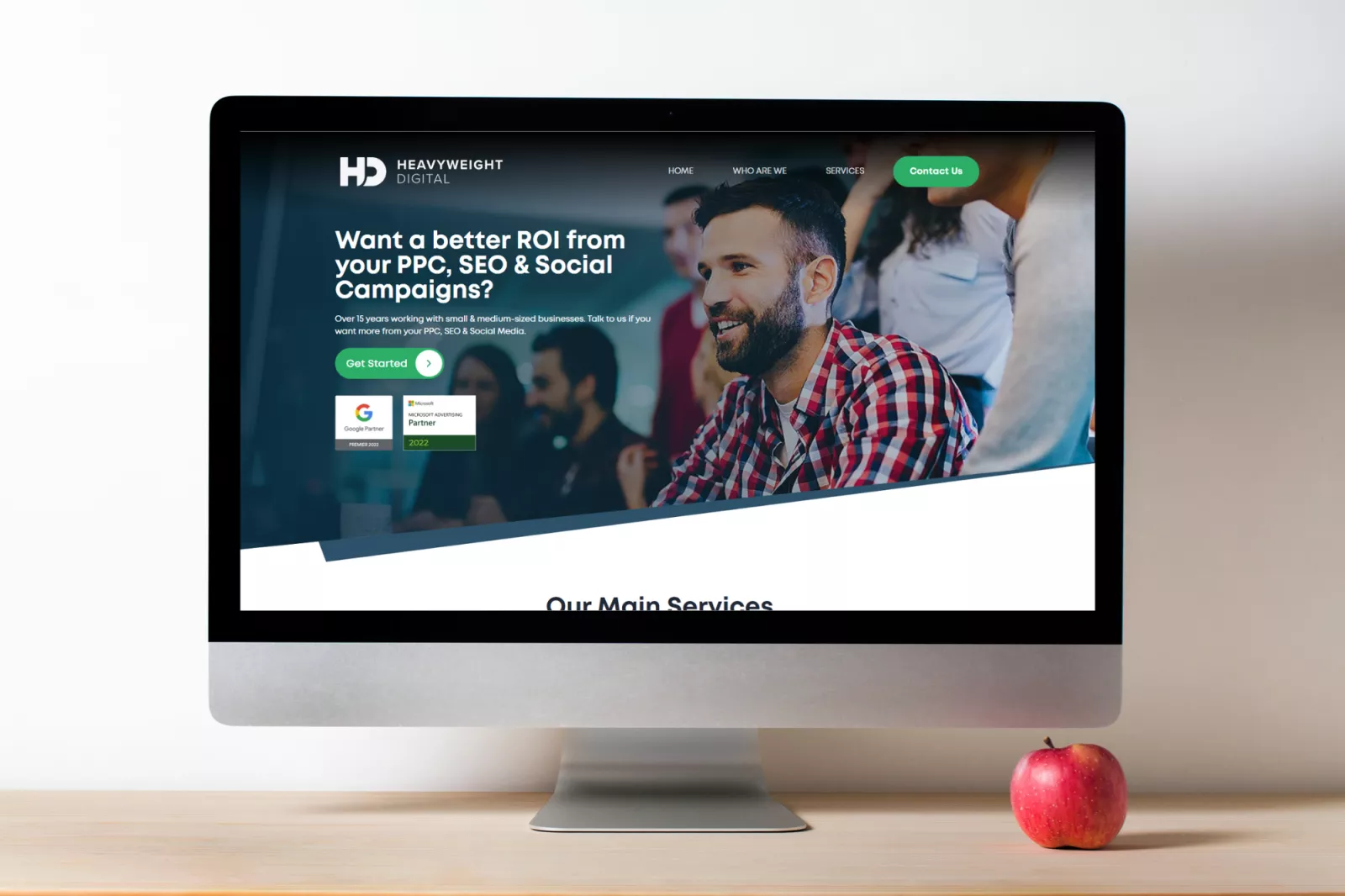
Landing Pages vs Websites Which One Brings More Conversions?

by Lucy Greenaway
In today's digital world, businesses are constantly seeking new ways to attract and retain customers online.
One of the most important aspects of any online business strategy is conversions – turning website visitors into paying customers.
To achieve this, businesses have two main options: a landing page and a website.
While both can be effective in their own right, the debate continues which one is better for bringing in more conversions.
Breaking it Down: What Exactly are Landing Pages and Websites
But what on earth is a landing page and how does it differ from a website?
When considering what kind of online presence you want your business to have, it is vital that you understand the difference between landing pages and websites.
The odds are that at some point, you will need both a website and different landing pages, however, it can be a complete game changer knowing the difference between the two so you can decide which is best to start with for your business.
Both landing pages and websites are essential components in any online marketing strategy, but they each serve different purposes.
Think of a website as a house, I know, sounds weird right? But a website is essentially housing your online presence. It is the hub of information about your business and what services or products you offer.
Each page on your website is like a room in a house, they all serve a different purpose and function and will typically consist of a homepage that serves as the entry point for visitors to navigate to other pages, such as a blog, service pages, product pages, about us page, contact page, etc.
Websites are designed to give the user a complete browsing experience, with a wide range of content readily available.
A landing page is a standalone web page that is laser-focused and has been purposely designed to capture a user's attention and encourage them to take a specific action, this action could be to subscribe to a newsletter, make a purchase or get in contact.
These landing pages are normally more focused and have one single call-to-action (CTA) to reduce navigation distractions and increase the likelihood of a conversion. When you want a user to complete one specific action that is when it is a good idea to create a dedicated landing page for this action.
Does That Really Answer The Question?

You may be thinking that this answers the question of which brings in more conversions, however, the debate isn't as clear-cut as this...
While websites are designed to provide comprehensive information and provide the visitor with a complete browsing experience, they also have the intention of converting users by using various CTA's.
The stark difference here is that landing pages are normally created and optimised with one conversion action in mind, so the entire page is dedicated to converting visitors. However, even a great landing page can have a bounce rate.
Pro Tip: You should be using an analytical dashboard like Google Analytics to effectively track what users do when they reach your website or landing page.
When you only have one action a visitor can commit, they will either choose to complete that action, or they will leave. There isn't the option to browse around the page and gather more information or commit other actions that could be available on a website.
For example, if your landing page was created to encourage users to download your 7-day exercise plan, the user can download it which is essentially saying 'Yes I am interested in this'.
This opens more doors for repeat business from this user as they have intentionally given you their name and the other information you require for the user to be able to take action. The other option is that the visitor will click off the page because it doesn't offer what they were searching for.
When a landing page or a website hasn't been designed with the customer in mind, it can result in higher bounce rates and fewer conversions.
This is why it is vital that you create landing pages and websites that reflect the journey your customer will take and make it as easy as possible for the visitor to get in contact with you or complete the call to action you want.
Benefits of A Landing Page for Conversions
There are many benefits to creating effective landing pages. Depending on the business, your own landing page can be much more important to have than a full website.
If you have paid out for a flashy new website it can be important to introduce a landing page to assist in bringing in conversions to your business or building up your email list.
Landing pages serve as a single call-to-action which reflects the one goal you have for that particular landing page.
When a visitor is navigating search engines with one specific goal in mind, a landing page is far more effective in obtaining that visitor as a customer due to its direct nature and how it leads the visitor through the customer acquisition journey.
When it comes to creating landing pages, many different types of landing pages are worth exploring, here are just a few:
Lead generation landing pages
Generate Leads.
Lead generation landing pages (or lead capture landing pages) are often used in PPC advertising (Pay-Per-Click) as the destination point for the ads due to their hyper-focused content and conversion-driven content.
Utilising the fact that the visitor will have no exit path other than submitting their information or leaving the page altogether can lead to higher conversion rates and therefore a better ROAS (Return On Ad Spend).
Click-through landing pages
The middle man.
This type of landing page provides detailed information about an offer to persuade prospective customers and visitors to 'click through' to a conversion page or transaction page. It essentially acts as the middleman between the ad or service/product page and your online store.
This is beneficial as it allows a visitor to get familiar with the business, features, products or services before being asked to make a purchase right off the bat which can be off-putting.
Splash pages
Make a splash with your potential customers.
It does what it says on the tin, a splash page is meant to grab a site visitor's attention before they arrive at the expected end destination. These pages aren't created with the sole intention of a conversion, but they are there to fulfil a certain goal.
These pages can be used to set a language preference for the site, enter an age, make an announcement about upcoming sales etc all before the visitor enters your website.
Squeeze landing pages
Squeeze in what you can where you can. These pages are To. The. Point.
These landing pages still have one clear CTA, to provide your email address. However, they are less about educating users about an offer or details about the service but they are more focused on gaining the visitors email address. The content is rather limited, being shorter and smaller and there is a lack of images.
Thank you landing pages
While this type of landing page doesn't have the goal of users actioning conversions (seeing as the visitor has already converted at least once), they are typically used to nurture the customer/lead and make them aware of additional offers with strategic content to entice them to come back for more.
Long-form sales pages
Very low down on the funnel.
Long-form sales pages wouldn't be the first thing that you want a potential lead to see (depending on the business), this is because on this page you will typically be asking for payment rather than just contact information.
Unsubscribe landing pages
As painful as it is, sometimes customers want to leave.
Whether it be someone unsubscribing from a service or an email list, the unsubscribe landing page is your last chance to try and retain some of these customers.
You want this page to be engaging and sleek looking. One 'unsubscribe' button on the page isn't ideal to encourage the subscriber to give it one more chance. You can be witty on this landing page but you must ensure you provide the user with a compelling reason to not hit that unsubscribe button.
Product pages
Most website homepages allow visitors to navigate and explore several products and offerings. But what if you want a user to see a specific product when they land on your domain? For that, you have product landing pages.
Common in retail and tech, this type of landing page will give a complete breakdown of what the product is, how it works, its features and the problems it solves.
Which is Better for Conversions?

Sorry to say, but there isn't a one-size-fits-all answer to whether you should have a landing page or website, just like there isn't a one-size-fits-all approach to a good digital marketing strategy. This is because every business is different, even if they are in the same industry, they have different goals to meet.
It also depends on how well you can execute the landing page and website. A landing page is quicker to make and normally cheaper, but you do need to ensure that it is a good and well-optimised landing page for it to have a profound effect on your conversion rate, goal intention and ROI.
A website will take longer to build and be more expensive but it is absolutely worth the investment when done correctly due to all of the marketing opportunities it can provide.
There is only so much you can do to advertise a landing page and this will usually involve some cost one way or another, but with a website, you can increase search engine rankings organically which in turn can help to provide cheaper leads compared to the cost of an SEO campaign (these do typically take longer to see due to the nature of SEO).
Typically it is best to have both a website and landing pages to ensure that you can cast your net wide and minimise the amount of potential leads or customers who may slip through the cracks.
Optimising Landing Pages and Websites for Conversions

Landing pages are designed for a specific purpose.
There is no point in going to all the effort to create a landing page if you don't have that one specific purpose or goal in mind when creating the landing page. This is the first step in creating a good landing page, regardless of what type of landing page it is.
Landing pages have a single CTA
Once you have identified the goal and purpose for the landing page, you need to come up with the single call to action that is going to be most effective in reeling in the visitor and transferring them to a customer.
It is important to identify a good landing page builder to create a sleek and effective landing page that offers the elements needed to create an enticing call to action.
If you're unsure of how to navigate your way through all of the different landing page builders out there, liaise with a web developer to ensure you get started on the right foot.
Landing pages eliminate distractions.
Being able to browse the different areas of content on a website and commit different actions is brilliant for visitors who don't really know what they want yet, however, it can be off-putting to those who know what they want.
A landing page eliminates the distractions that visitors can experience on a website.
Landing pages increase relevancy and personalisation.
A well-optimised landing page will give the people what they want!
Whether they are organic traffic or have arrived at the page via PPC marketing campaigns like Google ads, or even through the web pages on your website, you need to be able to give the visitor what it is they are looking for in a direct, relevant and easy way.
This will help to mitigate the risks of visitors just leaving the page because they can't find what it is they are seeking.
Websites provide comprehensive information about the business
Websites can help visitors gain a deeper understanding of the business, its products or services, and its mission.
Many visitors like to browse and gain more information regarding the company and what it is they are offering of value. In turn, a website can help build trust and credibility, which can increase the likelihood of conversions.
Websites build trust and credibility
A well-designed website can create a professional image for the business, which can help build trust with visitors.
Testimonials, reviews, and case studies can also help build credibility and increase conversions as it is evidence of a good company and therefore a good service/product.
Websites offer various CTAs
Unlike landing pages, which typically have a single CTA, websites can offer various CTAs. This can help businesses drive conversions in a variety of ways, such as through contact forms, newsletter sign-ups, or product purchases.
Websites provide a complete browsing experience.
Websites offer a complete browsing experience, with a wide range of content available. This can include product pages, blog posts, FAQs, and more.
When you provide visitors with a complete browsing experience, there is the potential to see an increase in user engagement and this provides visitors with more opportunities to convert.